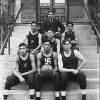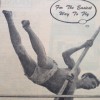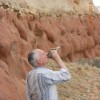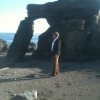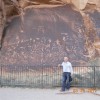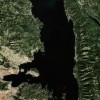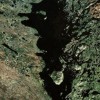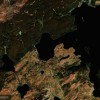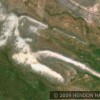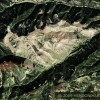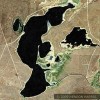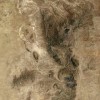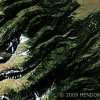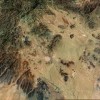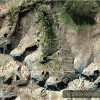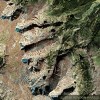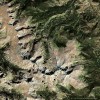
The Homer H. Dubs Priest Lake, Idaho Chessboard Grid System in the Joseph Needham North American Chessboard Grid Collection.
Posted on Monday, May 20th, 2013

The Chessboard Grid Pattern Has Its Roots in Shamanistic China and Vedic India Symbolism.
I am dedicating the chessboard grids found to the immediate south of Priest Lake, Idaho to Homer H. Dubs because of his life time of scholarship dedicated to Chinese history. He was the major force in the English translation of the first three volumes of the ŌĆ£History of the Former Han DynastyŌĆØ originally written by Pan Ku in 111 AD. Beginning as the son of Christian missionaries and then serving as a missionary himself he spent his lifetime studying Chinese history and culture. Born on March 28, 1892 he died on August 16, 1969 having last served as Chair of the Chinese Department at Oxford University. Those with an interest in Chinese studies will always be indebted to him for his excellent work.
Many of us enjoy playing chess or checkers but few know how ancient this particular board pattern is and what that pattern has represented in Eastern religious culture where it originated several millennia ago.
This pattern is mentioned in Chinese literature back to the period of the Emperor Yao 2300 BCE. It has also been identified in Vedic India. Later the chessboard pattern fits into the category of Asian religious art that the Hindus know as Yantras and the Buddhists know as Mandalas. It has been previously acknowledged that Mandala art has been located and recognized in North America. The Native American Medicine Wheel, Medicine Shield and Sand Paintings are identical to Mandala patterns from Tibet and China.┬ĀBut why has so little been known of the importance of the chessboard grid pattern in the Yantra and Mandala pattern of symbols? I know they were important in some North American pre Columbian cultures because of their size and quantity. ŌĆ£Most Chinese writings on Go quote the legend: ŌĆ£Yao invented Go in order to instruct his son Dan ZhuŌĆØ Since Yao was a semi-mythical emperor of the 23rd Century BC, this is usually rendered in English as: ŌĆ£Go is 4,000 years old.ŌĆØŌĆØ John Fairbairn, ŌĆśGo in Ancient ChinaŌĆØ.
The modern Go board has 19 lines by 19 lines (361 Points). The ancient Go board has 17 lines by 17 lines (289 Points). Today only Tibet uses the 17 lines by 17 lines ancient Go format. Is it a coincidence that Tibet still uses the 17 x 17 line format and the John Fairbairn Chess Board Pattern just below Burnstick Lake, Alberta Canada also has the 17 x 17 line format? Please remember that there are numerous other geoglyphs like the ŌĆ£Ancient Buddha Tree of Life Lotus FlowerŌĆØ near Egnar Colorado that have a definite Vajrayana (Tibetan) Buddhist character to them. Read Peter GoldŌĆÖs book: ŌĆ£Navajo and Tibetan Sacred Wisdom: The Circle of the SpiritŌĆØ This book clearly demonstrates the striking similarities between this Native American culture and Tibetan Buddhism. The Dalai Lama has written an endorsement letter in the front of GoldŌĆÖs book. Also available is an online article by a University of New Mexico professor Jeannie Martinez Wells, ŌĆ£ Dimensions of Dine (Navajo) and Buddhist TraditionsŌĆØ. Her article also illustrates the parallels between these two cultures separated by thousands of miles including the Pacific Ocean.
Much has been written on this ancient chessboard pattern by qualified individuals so I will refer you to a portion of the resources and references on this topic available.
- The Symbolism of Chess-The Structure of the Vacuum by Kate Durmas
- Thoughts on the Origins of Chess by Joseph Needham
- Go (Weiqi) in Ancient China by John Fairbairn
- Vedic Astrology and Chess
- Go (Weiqi) Chessboard Motifs
- Anasazi Pot Checker Board Pattern
- Anasazi Checker Board Rock Art/Gary A. Davis
- Anasazi Carved Rock/ Ira Block
More Information on this Topic: Google:
- The Chessboard Mandala/Buddhist
- The Chessboard Yantra/Hindu
- Chessboard Numerology
- The Chessboard in Vedic Religions
From the Asian Yi, Weiqi, Go boards and finally known to the Western World as the chessboard this pattern has many mysteries and much history that the modern world has yet to learn.
To bring this concept into modern history why is the chessboard pattern so significant to the Masonic Order that itŌĆÖs on the floor of their temple sanctuaries in the United States and around the world?
In conclusion these chessboard grid patterns found in numerous places in North America and their clear origin in Asia as art, religious and cultural practices coupled with other Vedic symbols such as the Manji (Swastika) Phallic Symbols and the most common Native American Wedding Ceremony, ŌĆØThe Seven Step/Seven Vow Wedding Ceremony which also originated in Asian India make it more and more difficult to not accept the obvious. And that is that Hwui ShanŌĆÖs 458 to 499 AD trip to North America not only took place but that he was not the first and certainly wasnŌĆÖt the last Asian seafarer to make it to the North American continent. Google:
- Chess Boards Land Patterns in North America
- Joseph Needham Chessboard Grids
- John Fairbairn Weiqi Board Grid
- The Harris Horse (Geoglyph of Tang Dynasty Chinese Horse)
- HendonŌĆÖs Geoglyphs
The Beak of the Tenth Sun/Raven-STILL GLOWS.
